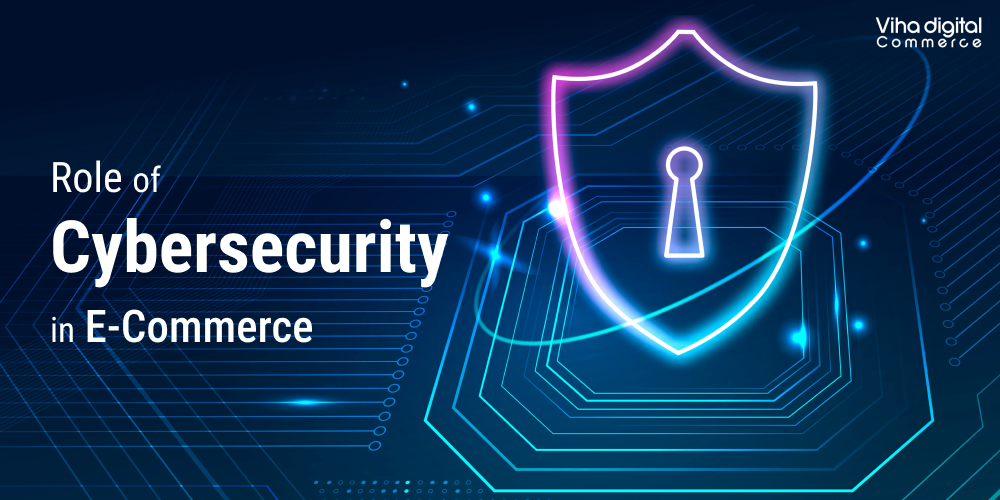
Ensuring Trust: The Role of Cybersecurity in E-Commerce
As you may be aware, one of the main reasons for losses and a decline in consumer confidence in the e-commerce industry is inadequate cybersecurity. On the other hand, these issues can be resolved by creating e-commerce systems in accordance with a variety of guidelines and recommendations and routinely testing them for vulnerabilities.
Growing Concern Over Cybersecurity
Every year, cybersecurity issues get more serious. Specifically, there has been a 30% increase in desktop and mobile attack rates in 2022 compared to 2021. This, of course, means lower customer loyalty as well as additional expenses related to mitigating the effects of cyberattacks.
This implies that businesses engaged in e-commerce need to be more cautious about making sure their digital solutions have the right security safeguards in place.
The Environment of Cyber Threats Regarding Online Sales
E-commerce companies have seven primary cybersecurity issues, according to my research.
- Malware: Software vulnerabilities, such as viruses and spyware.
- Distributed denial of service (DDoS) attacks: flooding web servers with traffic.
- Social engineering: Deceiving staff members into divulging information.
- Financial fraud: Making transactions using card details that have been stolen.
- Electronic skimming: The theft of credit card information.
- Bots: Gathering data from user accounts.
- API attacks: breaking into e-commerce websites’ APIs.
Global e-commerce companies suffer large annual losses as a result of these concerns.
Vulnerability Assessment: Finding E-Commerce Platform Vulnerabilities
E-commerce systems can be evaluated for vulnerability in two ways: internally and outside. The first approach involves locating security flaws in the company’s IT infrastructure, while the second involves spotting threats coming from the worldwide network. However, it’s also critical to realize that the most successful hacks combine illegal access to the e-commerce company’s internal and external resources; as a result, these two approaches cannot be used interchangeably.
E-commerce security software comes in eight varieties that can be utilized to successfully minimize vulnerabilities.
- Software for viruses.
- Protective firewalls.
- Software for encryption.
- Solutions using biometrics.
- Tools for access management.
- Electronic certifications.
- Signatures in digital form.
- Safe payment gateways.
Developing A Sturdy Cybersecurity Architecture
It is necessary to initially comprehend data location, format, legal requirements, and external connections before constructing a robust e-commerce cybersecurity framework. Determine important information and backup plans. Next, seal any gaps through monitoring, encryption, authentication, access permissions, and data security for customers.
Regularly reevaluate after installation to ensure that initial requirements are met. Remember that because hacking techniques are always changing, maintaining cybersecurity necessitates regular implementation of these measures.
Regulations Concerning Data Protection and Privacy
It’s now time to think about the particular rules and laws that e-commerce companies who offer their services in the United States and the European Union must abide by.
There are currently many e-commerce regulations in place, such as PIPEDA, CCPA, CNIL, GDPR, TTDSG, DSA, and CPRA. The two that will, however, have the biggest effects on many e-commerce businesses are CCPA and GDPR.
GDPR guarantees individuals’ control over personal data by specifying processing norms, consent, and transparency. It went into effect in May 2018. Penalties for noncompliance might reach 4% of the total yearly turnover. Beginning on January 1, 2023, e-commerce that generates at least $25 million in gross income annually, mostly from the sharing or sale of data belonging to California residents, is subject to the California Consumer Privacy Act (CCPA).
The following actions are recommended in order to help guarantee compliance and safeguard client data.
In Order to Comply with GDPR
- Determine the used data types.
- Only gather information for designated uses.
- Get the express permission of the client.
- Permit clients to use their rights, such as the ability to have their data deleted.
- Put in place a privacy policy within the platform.
- Employ third-party interfaces that comply with GDPR.
- Name a person in charge of data protection.
- Refrain from transferring data to areas with more stringent regulations.
Regarding CPRA Adherence
- Determine the sources and user data.
- Get data ready for portability, deletion, and access.
- Confirm the origins of third-party data.
- Provide several ways for submitting requests.
- Educate users about privacy regulations and data handling.
- Put internal privacy guidelines into effect.
Keep in mind that when data protection regulations change, so too may the scope of compliance requirements.
Case Study: The Evolution of Cybersecurity
To provide further context, the following example shows how cyber threat identification might actually work in an e-commerce business: My business collaborated with a global e-commerce corporation. They were reassessing cybersecurity since there might have been a data leak.
A pentesting team examined vulnerabilities, evaluated network security, and found holes. They verified adherence to ISO 27001, NIST, and OWASP, among other standards. Both automated and manual techniques identified problems, gave them a priority, and improved the system.
Getting Ready For The Future Of Cybersecurity In E-Commerce
Current e-commerce hacking trends frequently target well-known attack types, such as SQL injections, brute force attacks, and DoS/DDoS attacks. Even though more sophisticated cybersecurity techniques and technologies are always being developed, I’ve discovered that these kinds of network vulnerabilities are the ones that cause multi-billion dollar losses for e-commerce businesses every year all over the world. That’s why lowering the risks connected to these kinds of attacks is crucial when putting a cyber threat prevention strategy into action.
As you can see, guaranteeing the cybersecurity of e-commerce solutions is a rather involved process that calls for three main phases to be repeated on a regular basis: first, the system must be checked for stability; second, bottlenecks must be identified and fixed; and third, the system must be regularly repeated. With the right knowledge, you can guarantee your platform’s lawful operation while also gaining confidence in its dependability.





